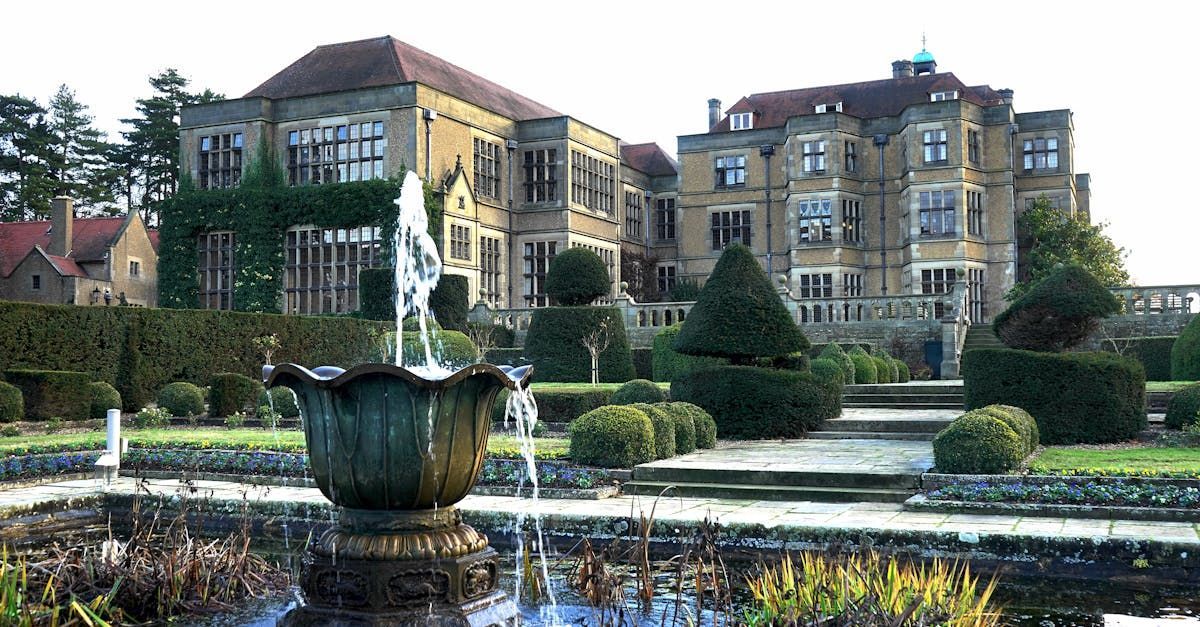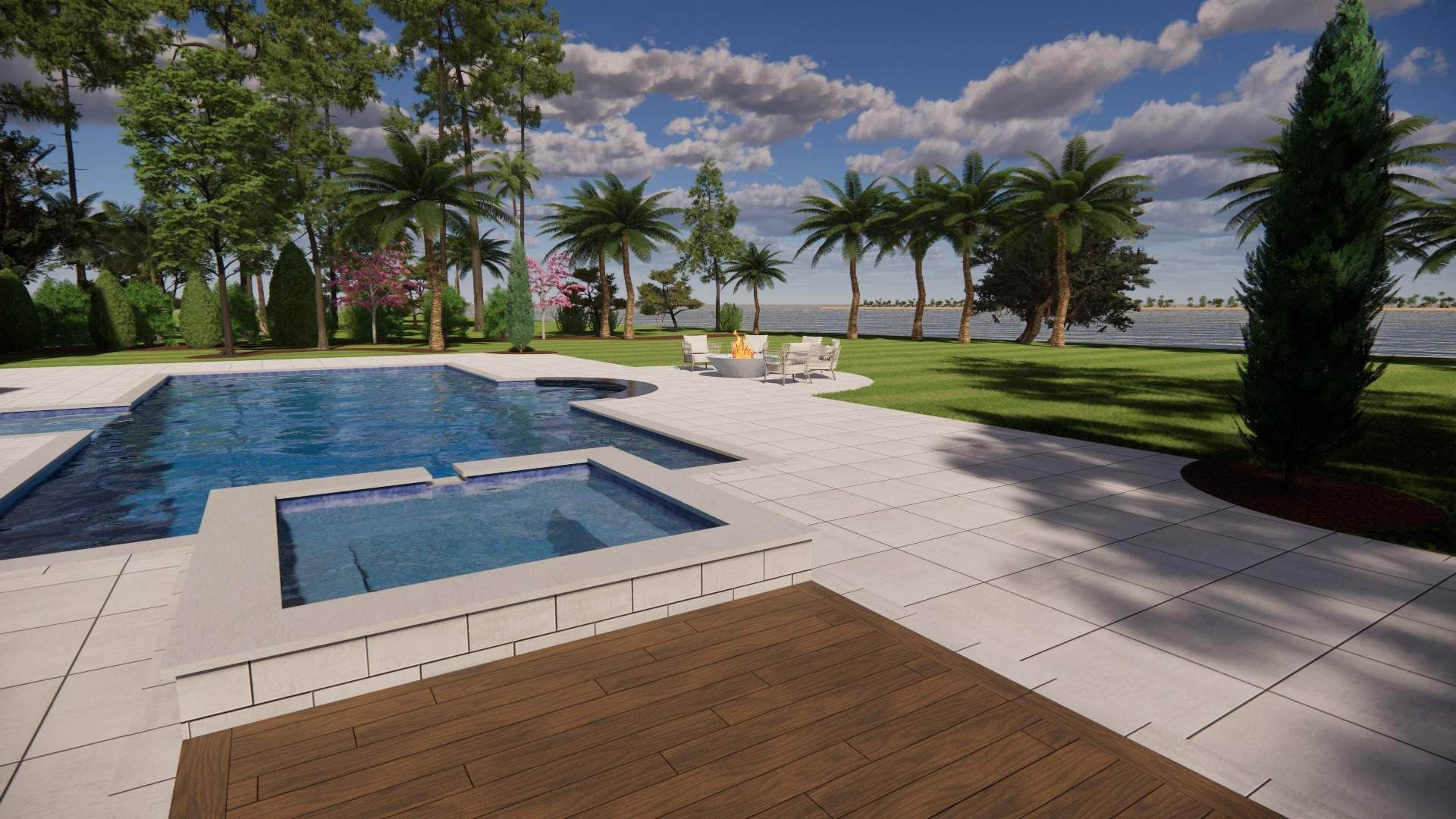Saltwater-Resistant Water Features: Coastal Elegance
Saltwater-resistant water features are essential for coastal landscapes, especially in Hilton Head Island, South Carolina. These specially designed elements can withstand the corrosive effects of salt spray and sea air, making them ideal for oceanfront properties and seaside gardens.
Key takeaways
- Saltwater-resistant water features are made with materials that can withstand corrosion from salt spray
- Popular options include stainless steel fountains, copper water bowls, and natural stone waterfalls
- Regular maintenance is crucial to extend the lifespan of these features in coastal environments
- Proper placement and design can help minimize salt exposure and maximize enjoyment
- Saltwater-resistant water features can add value and beauty to Hilton Head Island properties
Understanding the Need for Saltwater Resistance
Living on Hilton Head Island means dealing with the constant presence of salt in the air. This salt can quickly corrode standard water features, leading to costly repairs and replacements. Saltwater-resistant water features are specifically designed to withstand these harsh conditions, ensuring that your landscape remains beautiful and functional for years to come.
The impact of salt on traditional water features
Salt air and spray can wreak havoc on traditional water features. Metal components can rust, stone can erode, and pumps can fail prematurely. This is why it's crucial to choose materials and designs that can stand up to the coastal environment of Hilton Head Island.
Benefits of saltwater-resistant options
Investing in saltwater-resistant water features offers several advantages for Hilton Head Island homeowners. These features require less maintenance, have a longer lifespan, and maintain their appearance better than standard options. They also provide peace of mind, knowing that your landscape investment is protected against the harsh coastal elements.
Materials for Saltwater-Resistant Water Features
Choosing the right materials is key to creating a water feature that can withstand the salty air of Hilton Head Island. Here are some of the best options for saltwater-resistant water features:
Stainless steel
Stainless steel is an excellent choice for saltwater environments. It resists corrosion and maintains its sleek appearance even when exposed to salt spray. Many modern fountains and water walls use high-grade stainless steel for their durability and style.
Copper
Copper develops a beautiful patina over time and is naturally resistant to corrosion. Copper water bowls and spouts are popular choices for coastal landscapes, offering both durability and a classic aesthetic that complements many Hilton Head Island homes.
Natural stone
Certain types of natural stone, such as granite and slate, are more resistant to salt erosion than others. These materials can be used to create stunning waterfalls, rock gardens, and other water features that blend seamlessly with the coastal landscape.
Concrete and reinforced materials
Specially treated concrete and reinforced materials can also be used in saltwater-resistant water features. These options often mimic the look of natural stone while offering improved durability in coastal conditions.
Popular Saltwater-Resistant Water Feature Designs
Now that we've covered materials, let's look at some popular designs for saltwater-resistant water features that work well in Hilton Head Island landscapes:
Bubbling rock fountains
These simple yet elegant features use a single large stone or boulder with a hole drilled through the center. Water bubbles up from the top and cascades down the sides, creating a soothing sound and visual interest.
Urn fountains
Large urns made of saltwater-resistant materials like copper or reinforced concrete can serve as beautiful focal points in coastal gardens. Water spills over the edges, creating a gentle trickling sound.
Stainless steel water walls
Modern and sleek, stainless steel water walls offer a contemporary look that complements many Hilton Head Island homes. These features can be customized with different textures and lighting options.
Natural stone waterfalls
For a more organic look, natural stone waterfalls can be designed to mimic the coastal landscape. Using salt-resistant stones ensures that these features will stand the test of time.
Copper bowl fountains
Copper bowl fountains offer a classic look that ages beautifully in coastal environments. The natural patina that develops adds character and charm to the landscape.

Maintenance Tips for Saltwater-Resistant Water Features
While saltwater-resistant features are designed to withstand coastal conditions, proper maintenance is still important to ensure their longevity:
Regular cleaning
Clean your water feature regularly to remove salt buildup and prevent mineral deposits. Use fresh water and a soft brush to gently scrub surfaces.
Water treatment
Use appropriate water treatments to prevent algae growth and maintain water quality. This is especially important in the warm climate of Hilton Head Island.
Inspection and repairs
Regularly inspect your water feature for any signs of wear or damage. Address any issues promptly to prevent more significant problems down the line.
Winterization
Although Hilton Head Island has mild winters, it's still important to properly winterize your water feature to protect it from occasional freezing temperatures.
Integrating Water Features Into Coastal Landscapes
When incorporating saltwater-resistant water features into your Hilton Head Island landscape, consider the following:
Placement considerations
Position your water feature where it can be enjoyed without being overly exposed to direct salt spray. This might mean placing it in a sheltered area of your garden or on a protected patio.
Complementary plantings
Choose salt-tolerant plants to surround your water feature. Native species like sea oats, muhly grass, and yaupon holly can create a beautiful, low-maintenance landscape that enhances your water feature.
Lighting design
Incorporate landscape lighting to showcase your water feature at night. LED lights are energy-efficient and can withstand coastal conditions when properly sealed.
Hardscaping elements
Use saltwater-resistant materials for surrounding hardscaping elements like pavers, retaining walls, and seating areas to create a cohesive look.
Custom Saltwater-Resistant Water Features
For homeowners looking for something unique, custom saltwater-resistant water features offer endless possibilities:
Working with local artisans
Hilton Head Island is home to many talented artisans who can create one-of-a-kind water features using saltwater-resistant materials. These custom pieces can become true works of art in your landscape.
Incorporating local elements
Consider incorporating elements from the local environment, such as oyster shells or driftwood, into your water feature design for a truly coastal feel.
Sustainable options
Explore sustainable options like rainwater harvesting systems that can be integrated into your water feature, helping to conserve water while adding beauty to your landscape.
The Impact of Water Features on Property Value
Adding a saltwater-resistant water feature to your Hilton Head Island property can have a positive impact on its value:
Curb appeal
A well-designed water feature can significantly enhance your home's curb appeal, making it more attractive to potential buyers.
Outdoor living spaces
Water features can create inviting outdoor living spaces, which are highly valued in coastal communities like Hilton Head Island.
Energy efficiency
Some water features, like fountains and waterfalls, can help cool the surrounding air, potentially reducing energy costs during hot summer months.
Environmental Considerations
When installing a saltwater-resistant water feature, it's important to consider the environmental impact:
Water conservation
Choose designs that minimize water loss through evaporation and splashing. Recirculating systems can help conserve water.
Wildlife-friendly features
Consider creating water features that provide habitat for local wildlife, such as birds and beneficial insects.
Native plant integration
Incorporate native plants around your water feature to support local ecosystems and reduce the need for excessive watering and maintenance.

Popular Water Feature Styles for Hilton Head Island Homes
Different architectural styles call for different water feature designs. Here's a quick guide to popular styles that work well in Hilton Head Island:

Choosing The Right Water Feature for Your Property
When selecting a saltwater-resistant water feature for your Hilton Head Island home, consider these factors:
- Size of your outdoor space
- Architectural style of your home
- Desired level of maintenance
- Budget for installation and upkeep
- Noise preferences (some features are louder than others)
- Visibility from indoor living areas
By carefully considering these elements, you can choose a water feature that will enhance your property and provide enjoyment for years to come.
Working with Landscape Professionals
While some homeowners may choose to install their water features, working with landscape professionals can ensure the best results:
Benefits of professional installation
Professional landscapers have the expertise to properly install saltwater-resistant water features, ensuring they function correctly and last longer.
Maintenance services
Many landscape companies offer maintenance services for water features, which can be especially helpful for busy homeowners or those with complex installations.
Design expertise
Landscape designers can help you choose the perfect water feature for your property, taking into account factors like sun exposure, wind patterns, and existing landscaping.
Seasonal Considerations for Coastal Water Features
The changing seasons on Hilton Head Island can affect your water features:
Summer care
During hot summers, monitor water levels closely and adjust chemical treatments as needed to prevent algae growth.
Fall maintenance
As temperatures cool, clean out any fallen leaves and debris to prevent clogging and water quality issues.
Winter Preparation
While winters are mild, occasional freezing temperatures can occur. Be prepared to protect your water feature during cold snaps.
Spring Revival
As the weather warms up, give your water feature a thorough cleaning and check all components to ensure everything is working properly after winter.
Incorporating Lighting with Water Features
Lighting can dramatically enhance the beauty of your saltwater-resistant water feature:
Underwater lighting
Submersible LED lights can create stunning effects, illuminating the water as it moves and creating a magical nighttime atmosphere.
Accent lighting
The strategic placement of landscape lights can highlight your water feature and create beautiful reflections on the water's surface.
Solar options
Solar-powered lights are an eco-friendly option that works well in the sunny climate of Hilton Head Island.
The Sound of Water in Landscape Design
The sound of water can play a significant role in creating a relaxing outdoor environment:
Customizing water sounds
Different water feature designs create different sounds. Consider whether you prefer a gentle trickle or a more dramatic rushing sound.
Masking noise
Water features can help mask unwanted noise from nearby roads or neighbors, creating a more peaceful outdoor space.
Creating ambiance
The sound of water can set the tone for your outdoor area, whether you're looking for a serene retreat or a lively entertainment space.
Conclusion
Saltwater-resistant water features are an excellent investment for Hilton Head Island homeowners. They offer beauty, durability, and value in the face of challenging coastal conditions. By choosing the right materials, design, and placement, you can create a stunning focal point in your landscape that will withstand the test of time and the elements.
Whether you opt for a simple bubbling rock or an elaborate custom waterfall, a saltwater-resistant water feature can transform your outdoor space into a coastal oasis. For more information, you can visit our website or contact us.

HOURS OF OPERATION:
- Mon - Fri
- -
- Sat - Sun
- Closed
All Rights Reserved | Hilton Head Landscapes | Website Created by: Kickstart Local


